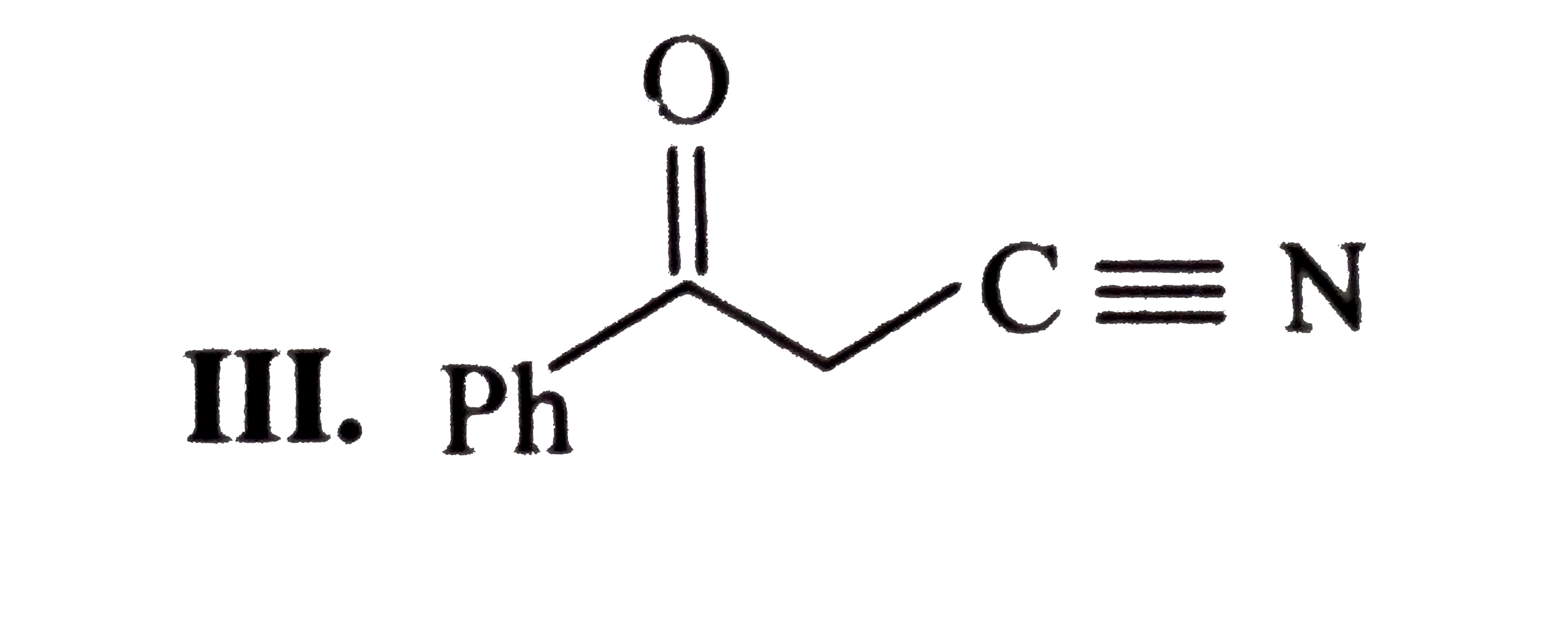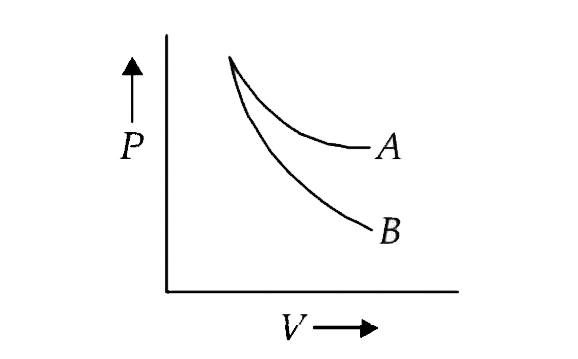A gas obeys P(V−b)=RT. Which of the following are correct about this gas?
(I) Isochoric curves have slop =RV−b.
(II) Isobaric curves have slope RP and intercept b.
(III) For the gas compressibility factor =1+RbRT.
(IV) The attraction forces are overcome by repulsive forces.
I
II, III
III
I, II, III, IV
To solve the question regarding the gas that obeys the equation P(V−b)=RT, we will analyze each statement provided in the question step by step.
Step 1: Analyze the Isochoric Curves
Isochoric processes occur at constant volume, which means V is constant. From the equation P(V−b)=RT, we can express pressure P as:
P=RTV−b
For an isochoric process, the slope of the P vs. T graph can be calculated as:
slope=dPdT=RV−b
Thus, Statement I is correct: Isochoric curves have a slope of RV−b.
Step 2: Analyze the Isobaric Curves
Isobaric processes occur at constant pressure, which means P is constant. Rearranging the original equation gives:
V=RTP+b
This equation is in the form V=mx+c, where m=RP (the slope) and c=b (the intercept). Therefore, Statement II is also correct: Isobaric curves have a slope of RP and an intercept of b.
Step 3: Analyze the Compressibility Factor
The compressibility factor Z is defined as:
Z=PVRT
Substituting P from the equation P(V−b)=RT:
Z=P(V−b)+PbRT=RT+PbRT=1+PbRT
Using P=RTV−b:
Z=1+RbRT=1+RbRT
Thus, Statement III is correct: For the gas, the compressibility factor is 1+RbRT.
Step 4: Analyze the Forces
The compressibility factor Z being greater than 1 indicates that the repulsive forces dominate over the attractive forces. This is because Z>1 implies that the gas behaves less ideally due to the predominance of repulsive interactions. Therefore, Statement IV is correct: The attractive forces are overcome by repulsive forces.
Conclusion
All four statements about the gas are correct. Therefore, the final answer is that all options (I, II, III, and IV) are correct.
Isochoric processes occur at constant volume, which means V is constant. From the equation P(V−b)=RT, we can express pressure P as:
Isobaric processes occur at constant pressure, which means P is constant. Rearranging the original equation gives:
The compressibility factor Z is defined as:
The compressibility factor Z being greater than 1 indicates that the repulsive forces dominate over the attractive forces. This is because Z>1 implies that the gas behaves less ideally due to the predominance of repulsive interactions. Therefore, Statement IV is correct: The attractive forces are overcome by repulsive forces.
All four statements about the gas are correct. Therefore, the final answer is that all options (I, II, III, and IV) are correct.
Topper's Solved these Questions
- STATES OF MATTERBOOK - CENGAGE CHEMISTRY ENGLISHCHAPTER - STATES OF MATTEREXERCISE - Exercises (Assertion-Reasoning)
24 Videos
- STATES OF MATTERBOOK - CENGAGE CHEMISTRY ENGLISHCHAPTER - STATES OF MATTEREXERCISE - Exercises (Integer)
10 Videos
- STATES OF MATTERBOOK - CENGAGE CHEMISTRY ENGLISHCHAPTER - STATES OF MATTEREXERCISE - Exercises (Multiple Correcttype)
32 Videos
- SOME BASIC CONCEPTS AND MOLE CONCEPTBOOK - CENGAGE CHEMISTRY ENGLISHCHAPTER - SOME BASIC CONCEPTS AND MOLE CONCEPTEXERCISE - Archives Subjective
11 Videos
- STOICHIOMETRYBOOK - CENGAGE CHEMISTRY ENGLISHCHAPTER - STOICHIOMETRYEXERCISE - Archives Subjective
33 Videos
Similar Questions
Which of the following are correct (B) and (C ) products, respectively ?

I.
II. , III.
, III. 
IV. , v.
, v. 
View SolutionA gas obeys the equation of state P(V−b)=RT (The parameter b is a constnat The slope for an isochore will be .
View SolutionA graph is plotted between logV and logT for 2mol of gas at constant pressure of 0.0821atm. V and T are in litre and K. Which of the following statements are not correct?
(I) The curve is straight line with slope −1.
(II) The curve is straight line with slope +1.
(III) The intercepet on Y−axis is equal to 2.
(IV) The intercepet on Y−axis is equal to 0.3010.
View SolutionWhich of the following intermolecular forces have a potential energy distance function as E∝1r2
(i) Ion -dipole (ii) Dipole -dipole (iii) Ion -induced dipole (iv) London dispersion forces .
View Solution1 mol of a real gas obeys P(Vm−b)=RT , where 'b' and 'R' are constants. If the compressibility factor of gas is 1.11 and occupied volume of the gas is Xb then determine value of X/2.
View SolutionThe curves A and B in the figure shown P-V graphs for an isothermal and an adiabatic process for an idea gas. The isothermal process is represented by the curve A.

View SolutionThe curves A and B in the figure shown P-V graphs for an isothermal and an adiabatic process for an idea gas. The isothermal process is represented by the curve A.

View SolutionV vs T curves at constant pressure P1 and P2 for an ideal gas are shown below

Which is correct ?
View SolutionIdeal gas equation is represented as PV=nRT. Gases present in universe were fond ideal in the Boyle's temperature range only and deviated more from ideal gas behavior at high pressure and low temperature.
The deviation are explained in term of compressibility factor z. For ideal behavior Z=PVnRT=1. the main cause to show deviavtion were due to wrong assumptions made about forces oif attractions (which becomes significant at high pressure ) and volume V occupied by molecules in PV=nRT is supposed to be volume of gas or the volume of container in which gas is placed by assuming that gaseous molecules do not have appreciable volume. Actually volume of the gas is that volume in which each molecule of gas can move freely. If volume occupied by gaseous molecule is not negligible, then the term V would be replaced by the ideal volume which by available for free motion of each molecule of gas in 1 mole gas.
Vactual= volume of container -volume occupied by molecules
=v−b
Where b represent the excluded volume occupied by molecules present in one mole of gas.
Similarly for n mole gas
Vactual=v−nb
As the pressure approaching zero i.e. at very low pressure. The curves plotted between compressibility factor Z and P for n mole of gases have the following characteristics.
(I) The intercept on y-axis leads to a value of unity
(II) The intercept on y axis leads to a value of 'n'
(III) The curves posses same slope for different gases at same temperature
(IV) The curves posses different slopes for different gases at same temperature.
(V) The curves posses same slope for a gas at different temperature
View SolutionDetermine which of the following statements are true at very high pressure for a real gas:
(a) Compressibility factor is greater than 1.
(b) Compressibility factor varies linearly with pressure.
(c) Molar volume occupied by gas is more as compared to ideal gas at similar pressure and temperature.
(d) Gas is less compressible as compare to ideal gas.
(e) Compressibility factor is given by
Z=1+PbRT.
View Solution
